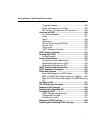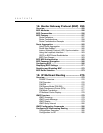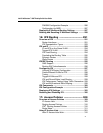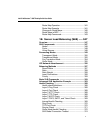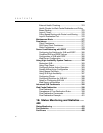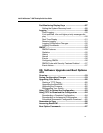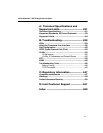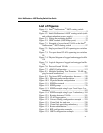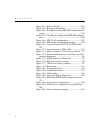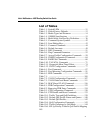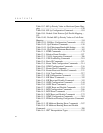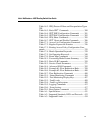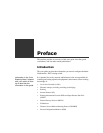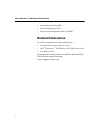
Intel
®
NetStructure
™
480T Routing Switch User Guide
xix
List of Figures
Figure 1.1: Intel
®
NetStructure
™
480T routing switch
(front) ........................................................................... 9
Figure 1.2: Intel
®
NetStructure
™
480T routing switch (with
and without redundant power supply) ......................... 9
Figure 2.1: Fitting the mounting bracket ........................ 19
Figure 2.2: GBIC module (1000 Mbps ports) ................. 22
Figure 7.1: Example of a port-based VLAN on the Intel
®
NetStructure
™
480T routing switch .......................... 97
Figure 7.2: Single port-based VLAN spanning two switches
98
Figure 7.3: Two port-based VLANs spanning two switches
99
Figure 7.4: Physical diagram of tagged and untagged traffic
101
Figure 7.5: Logical diagram of tagged and untagged traffic
101
Figure 7.6: Protocol-based VLANs .............................. 103
Figure 7.7: vMAN Configuration ................................. 113
Figure 9.1: Multiple Spanning Tree Domains - VLAN tag-
ging for trunk connections ....................................... 127
Figure 9.2: Tag-based STP configuration -Incorrect .... 128
Figure 10.1: Ethernet packet encapsulation .................. 148
Figure 10.2: IP packet header encapsulation ................ 151
Figure 11.1: ESRP host attach ...................................... 175
Figure 11.2: ESRP groups ............................................ 176
Figure 11.3: ESRP example using Layer 2 and Layer 3 re-
dundancy .................................................................. 183
Figure 11.4: ESRP example using Layer 2 redundancy 184
Figure 12.1: Routing between VLANs ......................... 191
Figure 12.2: VLAN aggregation ................................... 203
Figure 12.3: Unicast routing configuration example .... 219
Figure 13.1: Virtual link for stub area .......................... 230
Figure 13.2: Virtual link providing redundancy ........... 230
Figure 13.3: Route redistribution .................................. 233
Figure 13.4: RIP configuration example ....................... 241
Figure 13.5: OSPF configuration example ................... 249



